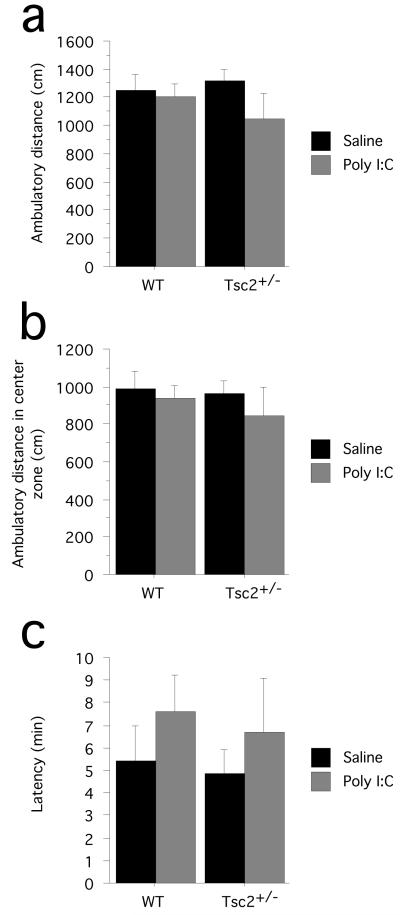Fig. 3.
(a) Behavioral testing, using the open field, revealed no significant effect of Tsc2 haploinsufficiency or gestational Poly I:C on ambulatory behavior, demonstrating normal locomotion in Tsc2+/−/Poly I:C mice. (b) Ambulatory distance in the center zone did also not differ between groups, suggesting normal levels of anxiety-related behaviors in Tsc2+/−/Poly I:C mice. (c) The graph shows the latency (min) to retrieve a buried food item in an olfactory sensitivity test. There was no significant difference with respect to latencies across the experimental groups, suggesting that olfactory dysfunction did not account for the behavioral impairments in Tsc2+/−/Poly I:C mice. Data represent means +/− S.E.M.

